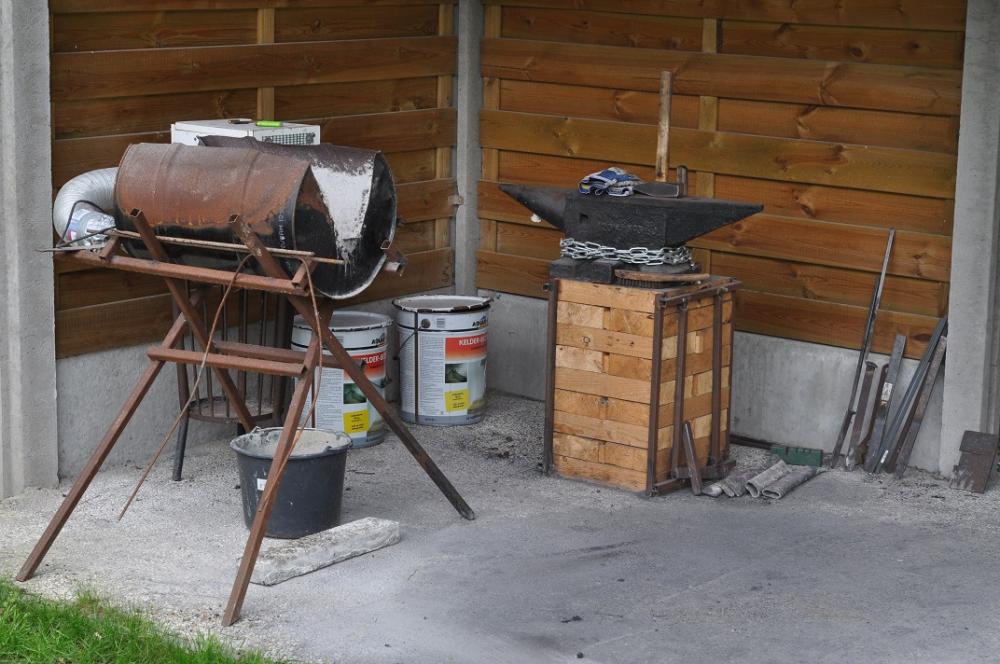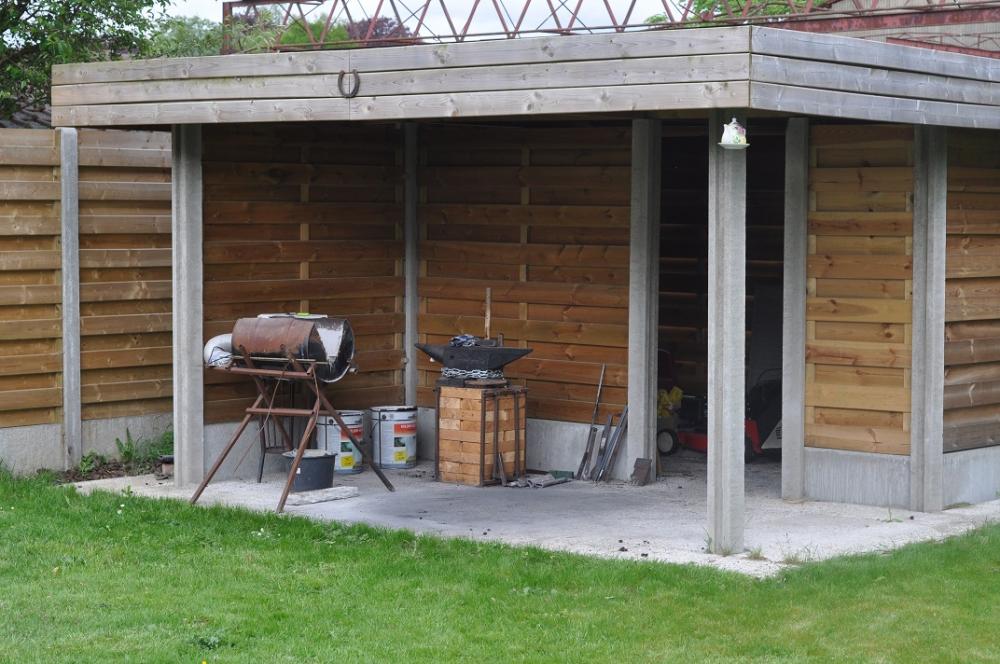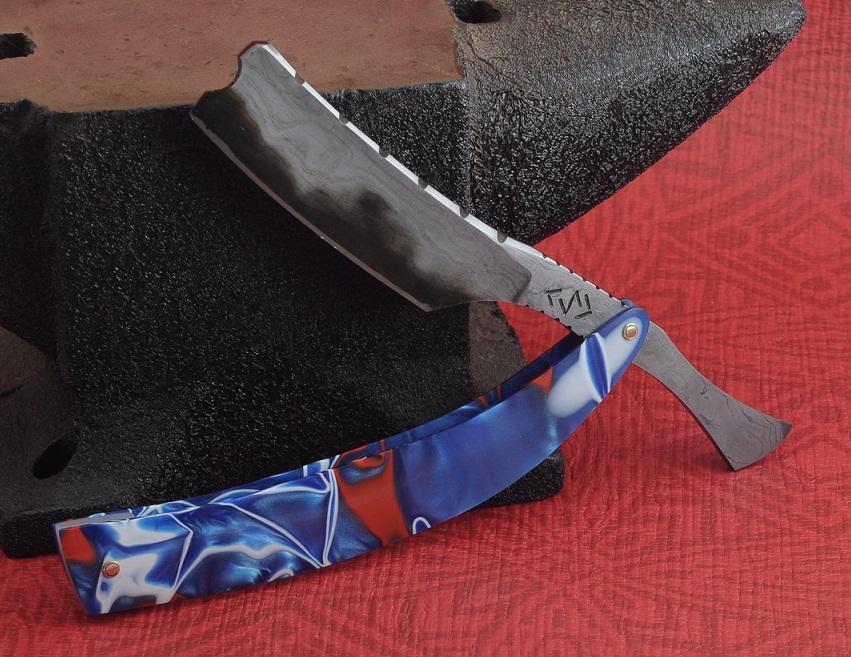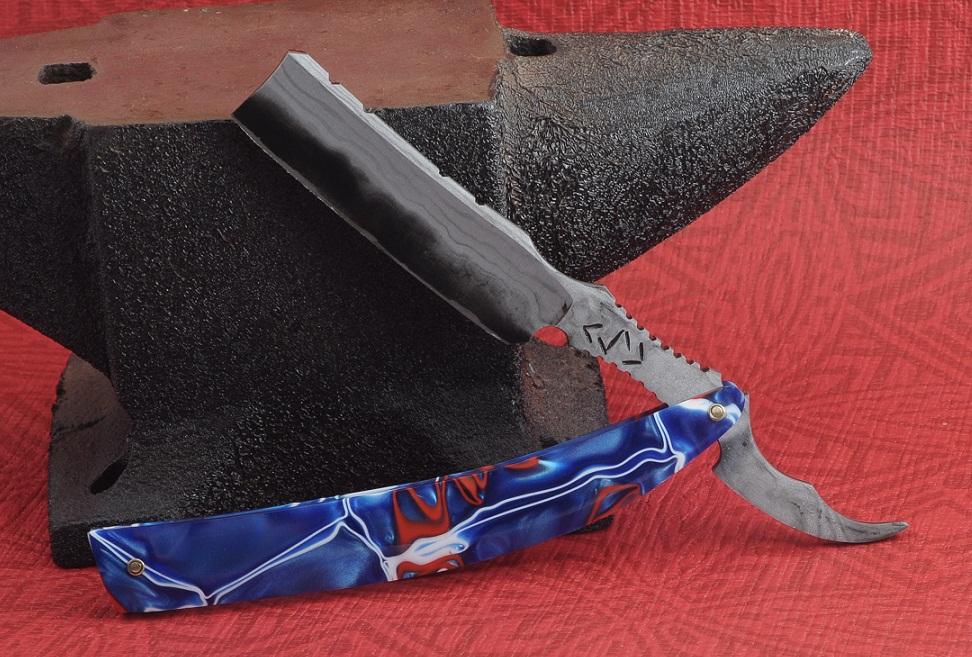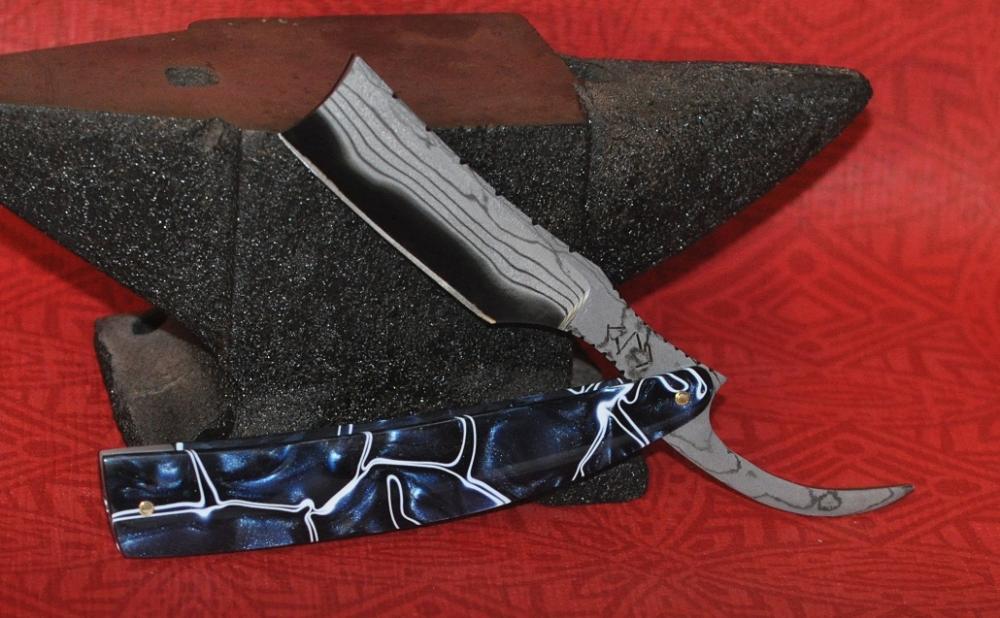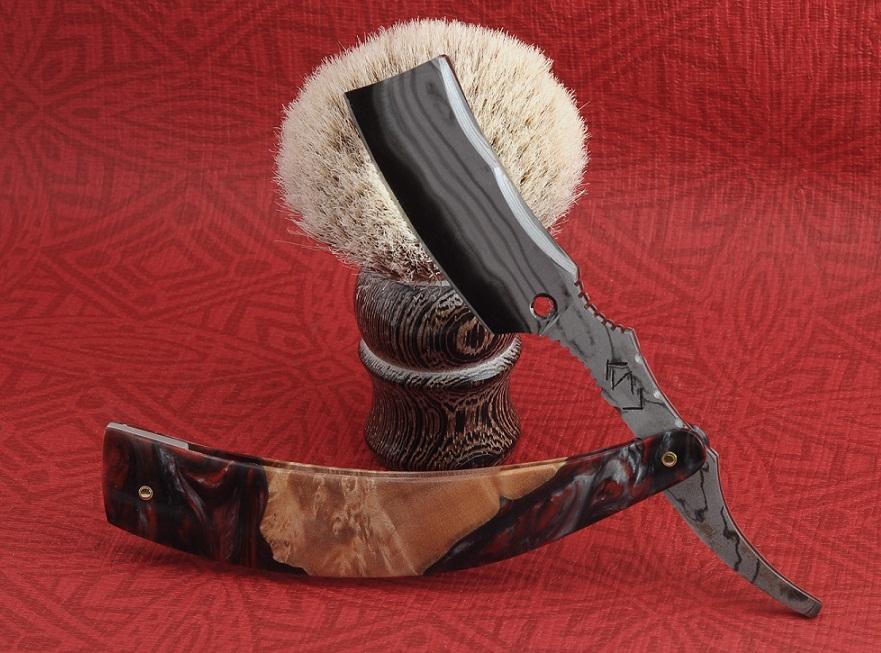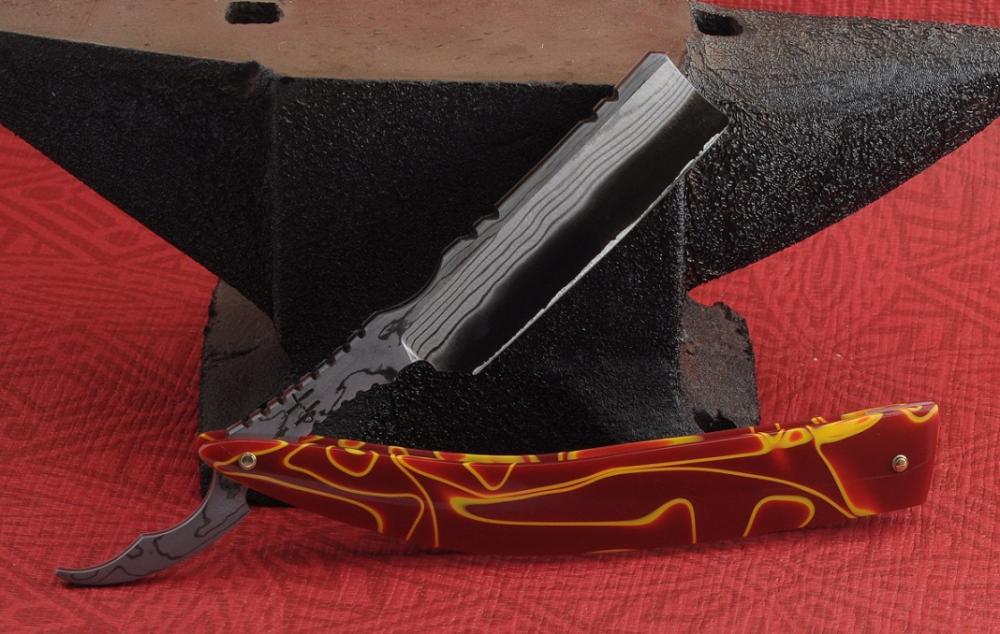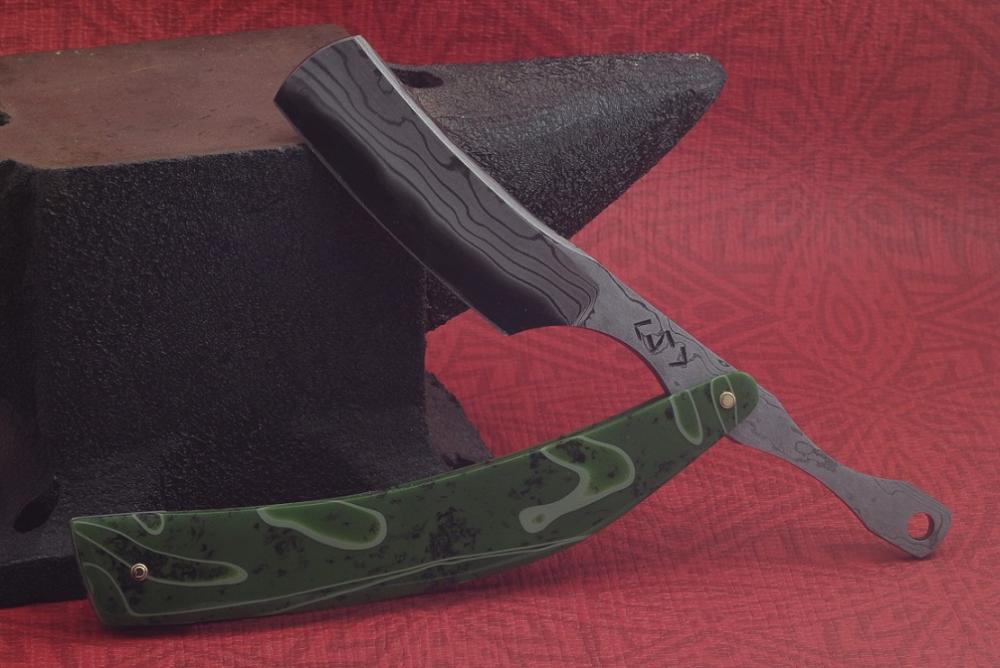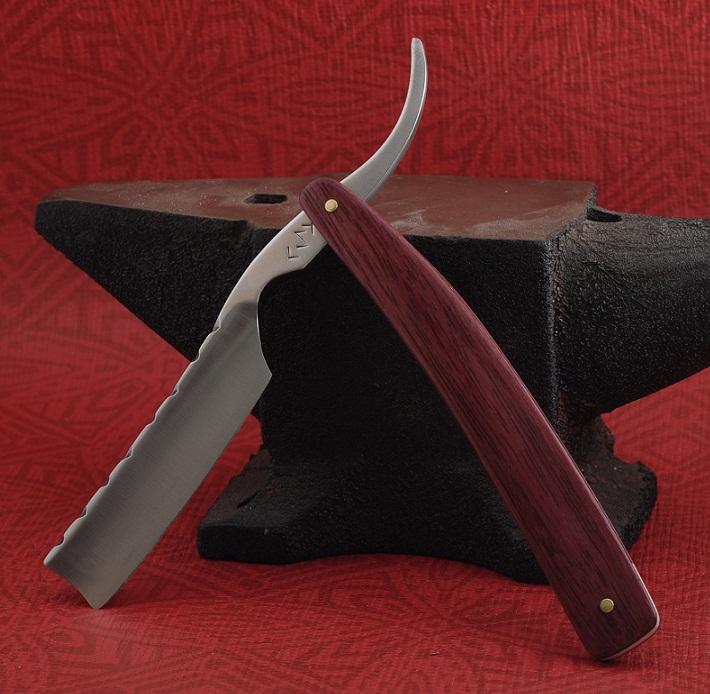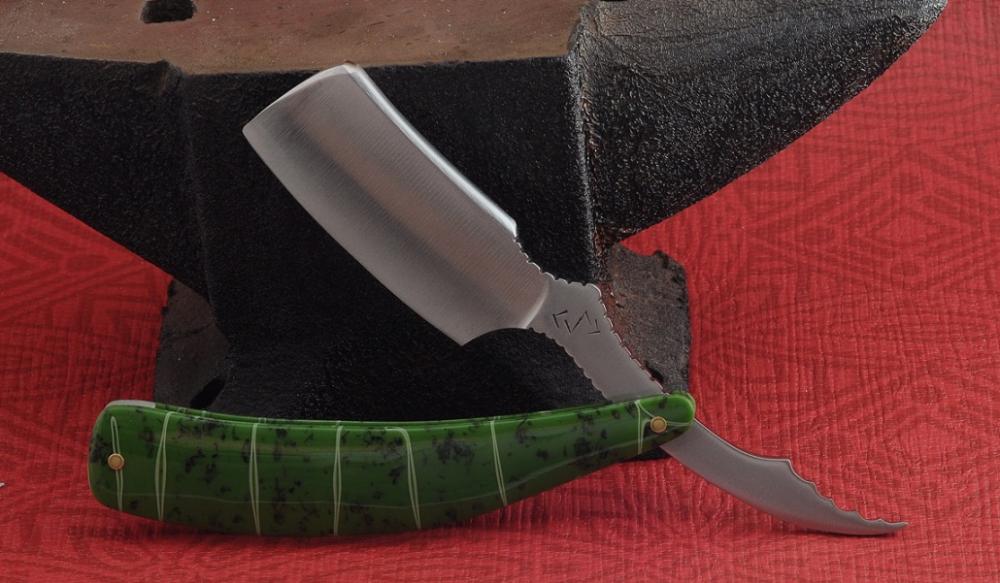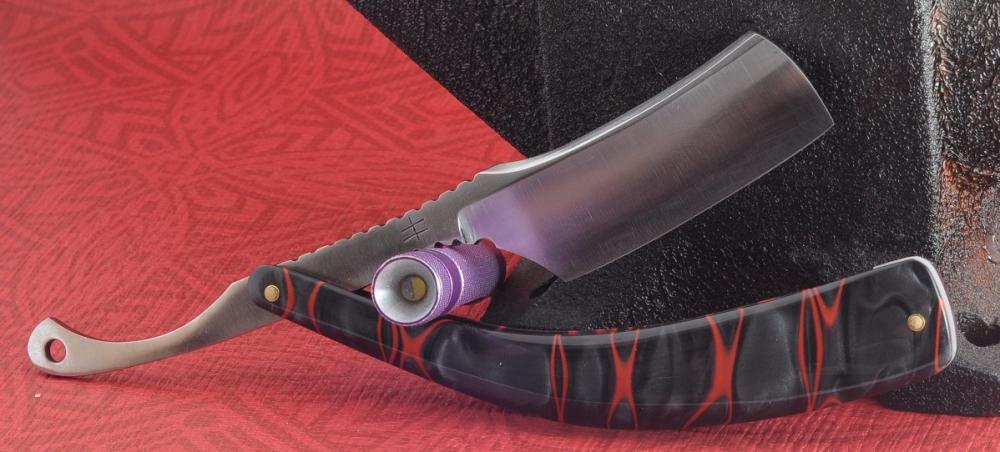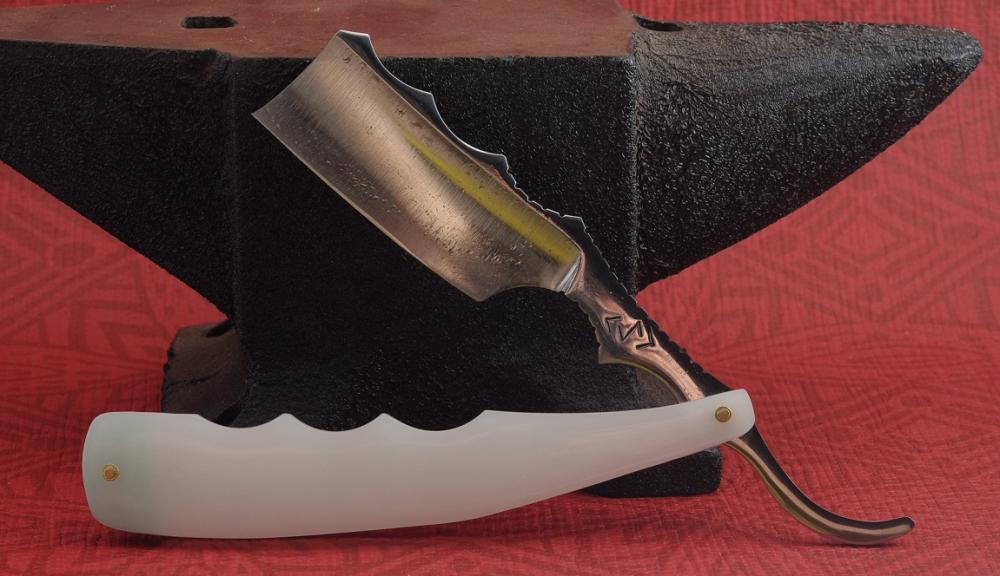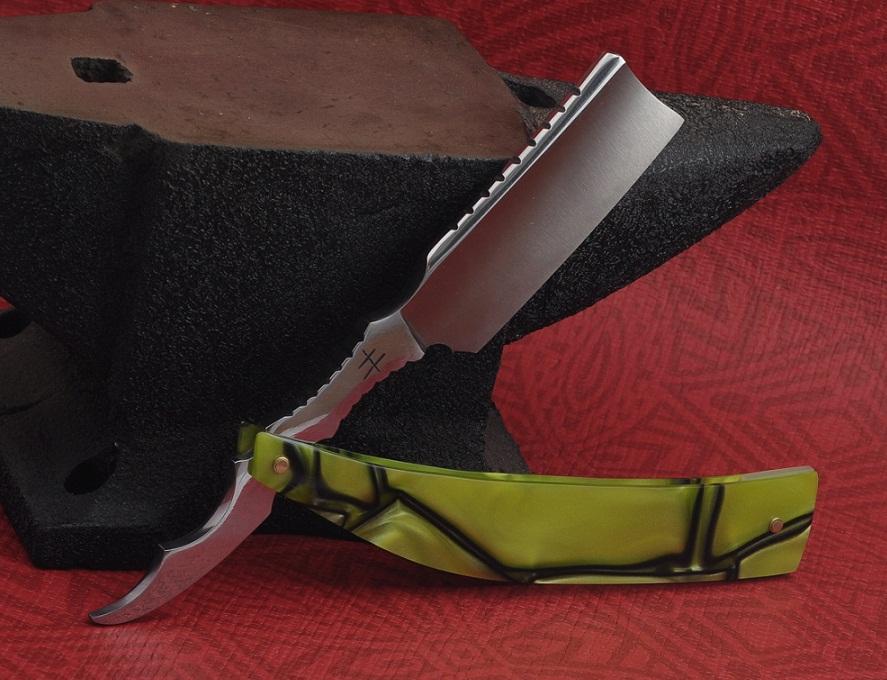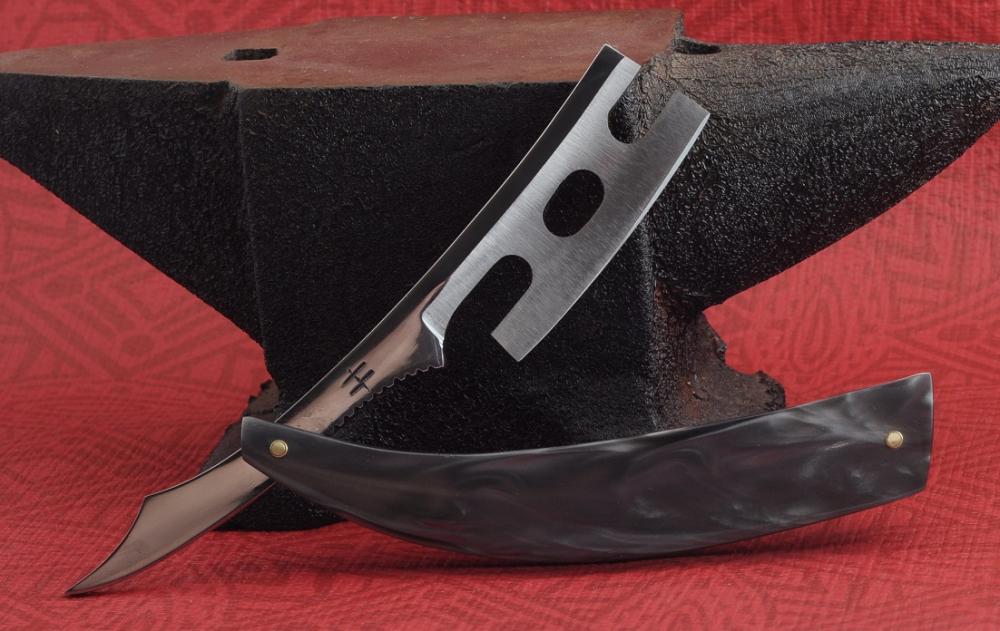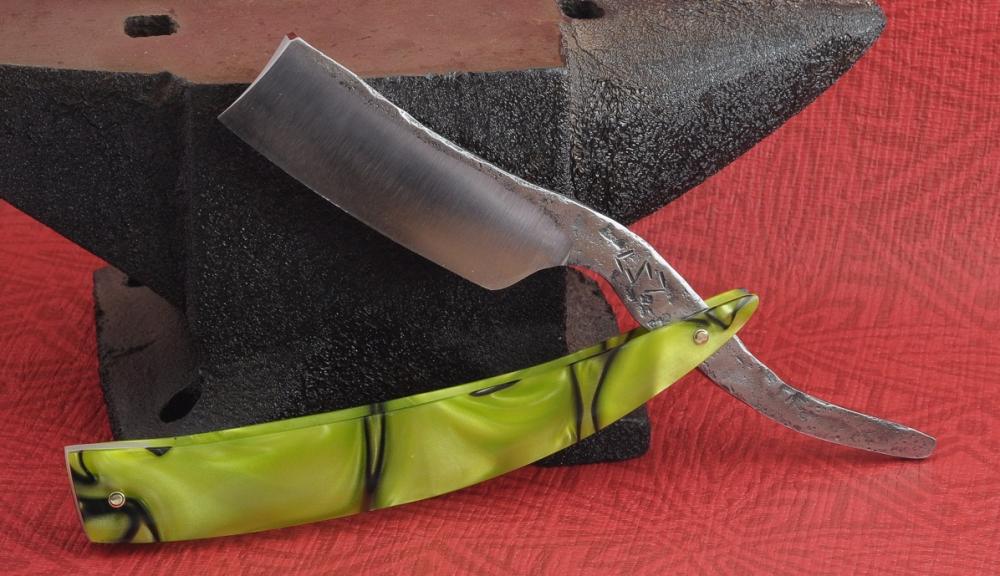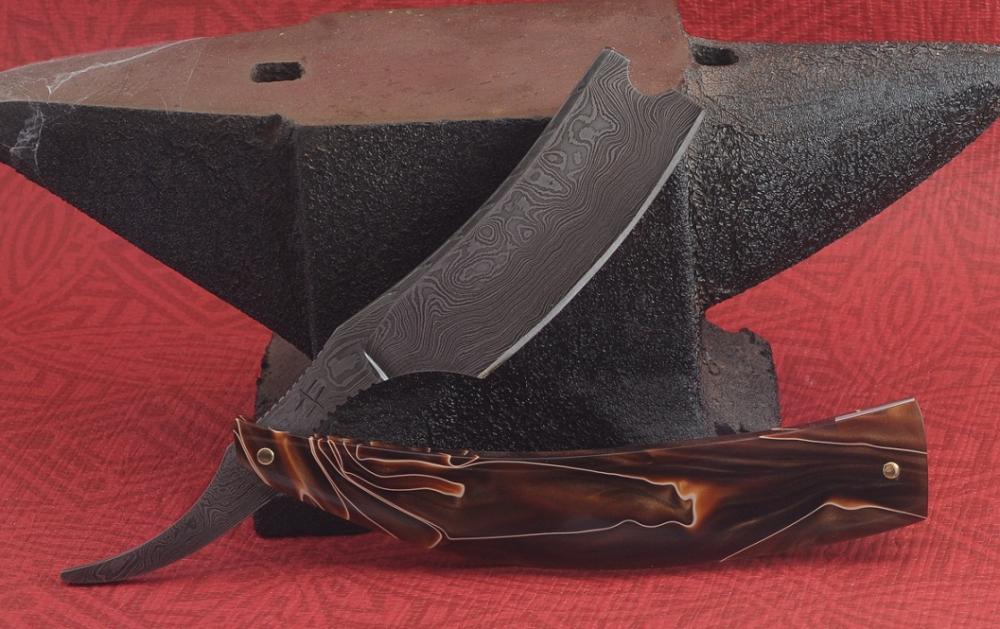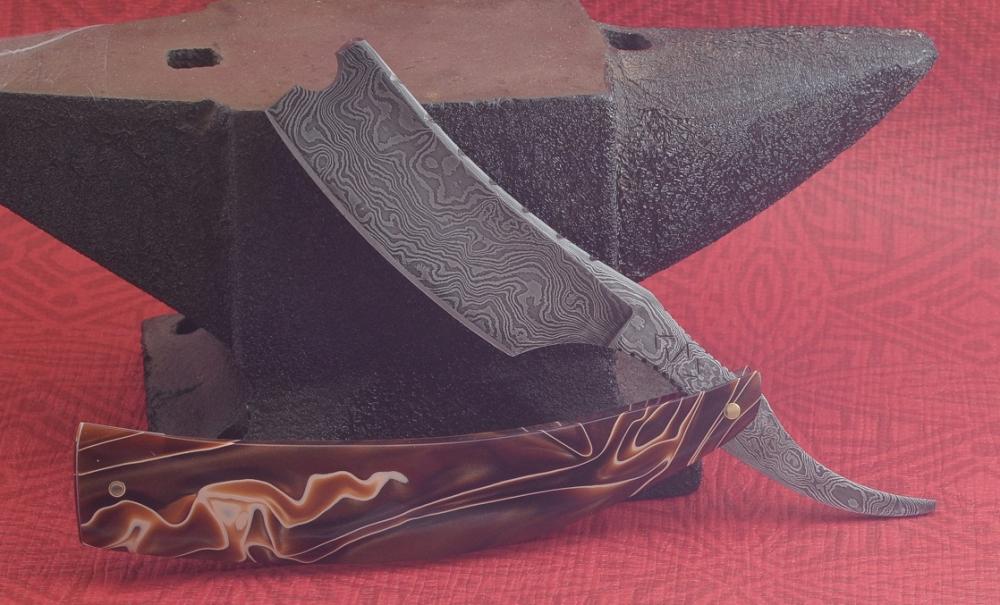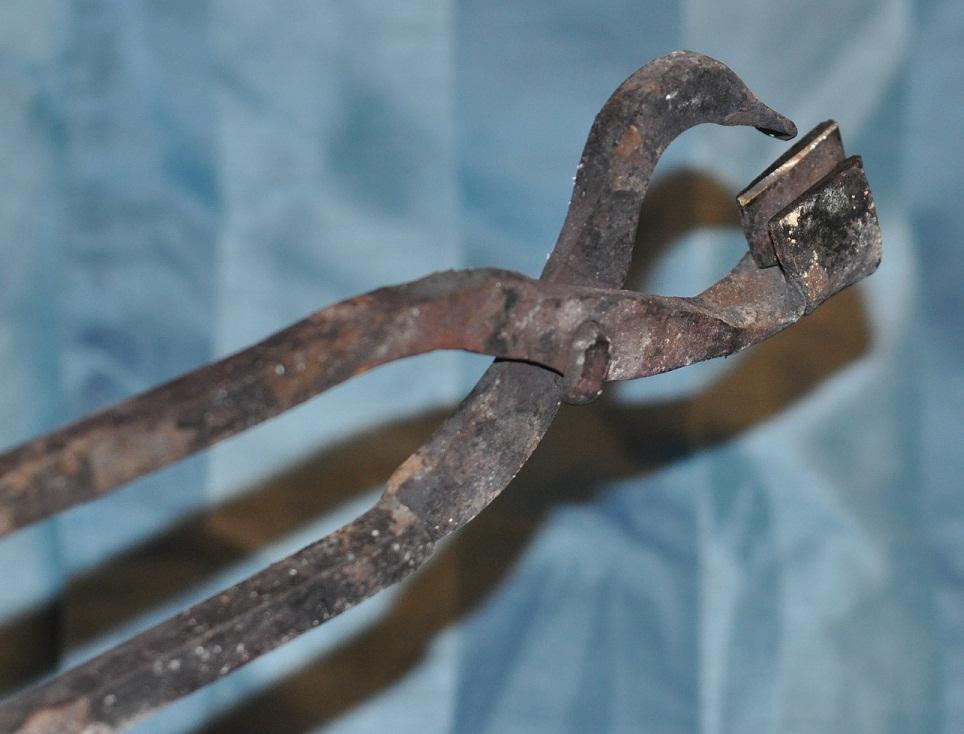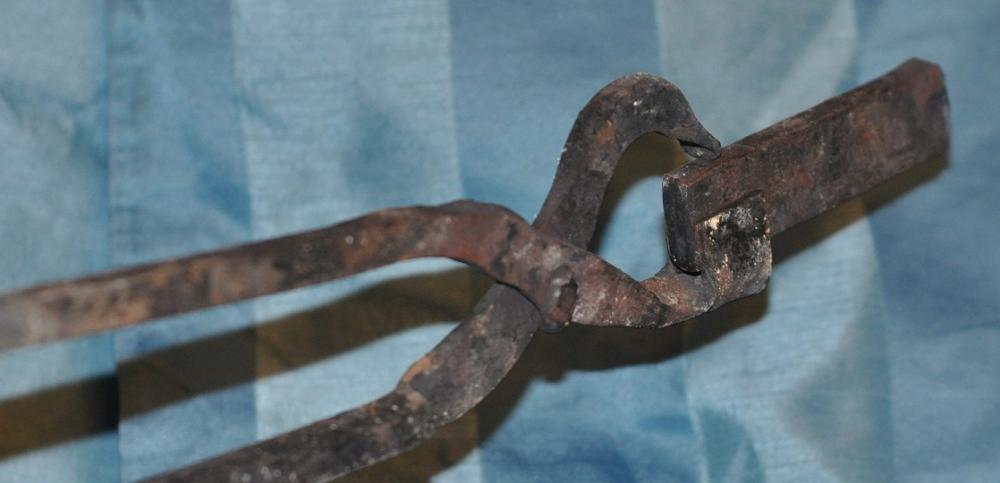-
Posts
129 -
Joined
-
Last visited
Content Type
Profiles
Forums
Articles
Gallery
Downloads
Events
Everything posted by SnailForge
-
-
After reading your post, I am wondering. I think it could be fun to make a step by step description of how I make a razor, starting with a plain bar of steel.
-
Within a cabinet it would work. It would be a hassle though. For the moment, I am thinking of buying a 2nd bandsaw. A quality one for in the basement, and then the old one can go in the shed for the dirty work where the dust doesn't bother anyone and just blows away. For my belt grinders I am going to make a dust collector that is mounted underneath the attachments, with a forced air intake. That should cut down on the fine dust in the shop. Add an in-shop water based particle filter, and it should be ok. I am also thinking about moving my buffer outdoors. I don't use it that much, and the dust hangs in the air for a long time. I've had a couple of eye infections in the recent past, and the dust in my workshop has probably played a big role in that. All other measures aside, one of my next purchases is a pari of prescription satefy goggles that resemble swimming goggles, in that they keep the ambient air away from the eye. My workshop is in the basement, so very limited natural air circulation,
-
The blades are all made from suminagashi steel. That is a core of Japanese white paper steel (1.3% C) and sides of mild steel with contrast layers. To be honest, I don't lilke it for several reasons, but customers like it, and the man with the gold makes the rules. Because only the core is high carbon and the rest mild, it needs to be forged carefully because it has a tendency to fold. and then you still have to make sure that the core layer stays dead center, or during hollow grinding you will find out that a portion of the edge consists of mild steel. It needs to be forged very hot to avoid delamination. after forging, you have to grind the entire thing to final size (except the edge which is thicker) because those contrast layers only show up when they are hardened properly. The difficulty is that like the core steel, they are shallow hardened, and if you need to grind away material after HT, you lose the crisp contrast lines. Because they are oil quenched, the hardening of those lines is shallow. Water quenching would harden the razor more deeply. But it has the problem that it is so violent that the sides literally peel away from the core steel like a banana peel. The edge needs to be left thick enough before quenching, because otherwise it doesn't retain the heat before quenching, and it will also warp. Otoh, it should be thin enough that the entire edge is hardened through, and that you can finish the hollows without getting to unhardened steel. Post HT grinding is another challenge, because you want to grind only the edge section. The rest should already be close to size or you lose the contrast lines. this is not that easy, because the sides are soft, and the core steel is very hard. On the grinding wheel it is difficult to keep steady because the sanding belt wants to skate over the hardened section, and dig into the sides. Whether you succeeded or not is only revealed after final grinding, by which time it is too late to do-over the HT in case etching shows soft spots or places without contrast lines. All in all, I like it not. But the shaving edge is excellent, and customers like it so who am I to argue. 8/8 razor in shokwood scales. shokwood is urethane impregnated burl with acrylic. it's a seamless whole. looks wonderful, but nasty stuff to work because it creates incredibly fine dust. 7/8 talon design with old denim kirinite scales 6/8predator design in patriot kirinite scales. You can see the etching revealing imperfect heat treatment. At this stage it was too late to do anything about it, so I finished it with scrapped scales from another project, and rounded the edge. It is now my youngest daughter's razor so that she can shave together with me (she's 7 and likes to pretend shave herself when I do) another 6/8 design with patriot kirinite. the HT on the tang was imperfect but the HT near the edge was good and someone liked it enough to buy it 7/8 predator design in red devil kirinite 6/8razor in pepper jade kirinite
-

Botched backyard heat treat
SnailForge replied to jcornell's topic in Heat Treating Knives, Blades etc
Once I ground a razor so thin I couldn't get to the quench tank fast enough. I thought I'd be smart, and heat it in an iron pipe, then take out the pipe and upend it right above the quench tank. It hit the quench nice and orange, and then exploded when it hit the condensation layer at the bottom of the oil tank, a split second later. Cracked lengthwise down the middle over the entire length. Made an unholy noise I never hope to hear again coming out of a quench tank. -

Botched backyard heat treat
SnailForge replied to jcornell's topic in Heat Treating Knives, Blades etc
This is an issue I've had with razor blades, when I ground them too thin. A razors edge is basically very similar to a cooling fin. It has little thermal mass and a large surface. Trial and error have taught me how thin I can make it before it cools down too fast to quench it. This is fairly easy to judge though. Take it out of the heat, and move it to the quench but stop right there and look at the steel. If it is still glowing, you would have been on time to quench it. Otoh, if the edge is already getting dark, you would not have been in time, and you were too slow. You can solve the problem either by being quicker, or by leaving a bit more mass near the edge, which would slow down the temperature loss. By the same token, if you see it is glowing very bright, you could hold it right above the quench tank and let it cool down so that you can plunge it in when the steel has the exact right temperature. -
This one is also O2, but etched after heat treatment. The inserts are 316 forgewelded in place. Not all the welds took fully, but they are peened so tight it makes no difference. I protected the bevel with nail polish during etching. At the time, I freehanded the nail polish causing a not so great appearance. These days I use masking tape when applying the nail polish, so that it is a tight line.
-
Here are some of the razors in O2 tool steel. I have tried several types of steel, and imo, for razors, O2 is the best, bar none. Heat treating it is fool proof, and it doesn't ever warp during quench. It has so much manganese that it never fails to harden. It takes a very fine edge, and polishes up nicely. It also behaves well on the hones. I just picked a couple of different designs to give you an idea of some of the things I've made. The scales are almost always kirinite. I love it for scales. It is easy to work, hard enough, takes a nice sheen when buffed, and doesn't release solvent smell when sanding. It also doesn't release such hazardous dust as G10 for example.
-
I know he isn't a smith, and I know that the producers will want variation in the shows because noone wants to see the same thing 4 times in a row. It has to have entertainment value. That doesn't change the fact that he is making a business out of something he enjoys. If the program has made that possible, good for him. Whether they are 'real' swords or not, if he can live off of it, he is doing better than many 'real' smiths we would look up to.
-
Thanks for the kind words everyone. By all means whenever I can help please ask. I think it is wonderful if one can make a business out of what he is passionate about. I am passionate about straight razors, and I am lucky enough that I am able to build a business out of it and that I am good at it. I have been doing this for a long time. The benefit is that it never feels like work, and all the time I spend drawing in my sketch book and thinking about things is 'fun time' instead of a drag. I like nothing more than working out new personal designs. I tend to favor medieval / alien looking designs. I'll post some more pics with other designs I made. The consequence of spending all my time on razors is that that's the only thing I dare call myself good at. I make kitchen knives from time to time, mostly to give away, and they're adequate at best. All the rest I wouldn't even know how to begin.
-
That is correct. Although the amount of metal removed is exceedingly small. In normal use a razor edge will not chip or break. It usually only needs to be refreshed occasionally on an 8K grit hone (or something in that ballpark) or stropped on a pasted strop. You could use a razor your entire life and -barring accidents- not notice it getting smaller. A razor edge is very thin. Any 'wiggle' on the stone would round it immediately. That is why from early 1800s onwards, razors got thicker spines in order to give them a fixed and almost unchanging honing angle jig, so to speak. This is the most common mistake knifemakers make when making a razor. Before 1800s, razors were fundamentally different, mand more like folding pocket knives with a thin spine. 1 layer of tape is very common. Especially with damascus razors, because people don't want to mar the spine where it touches the stone. A single layer of electricians tape is common, and does not noticeably influence the honing angle.
-
In the world of straight razors, the defining metric of a razor is the width, measured from the spine to the edge, like you woul dmeasure with calipers. The size is always measured and expressed in 1/8 of an inch, or occasionally in 1/16th if the number is odd. So this razor would be just over an inch in width (8/8) if it were bigger, I might express it as 17/16, but I'd never say 16/16. The number is also the minimum value. A razor is seldom 8/8 on the mark. If it is slightly bigger, everyone would say 8/8, but if it is even a hair less than 8/8, calling it 8/8 will be frowned upon. Although this is mostly so in the world of vintage razors, where certain sizes are rarer than others, and if you pay for a certain size, you want that size and not 'almost' that size. It's a bit like horsepower on a car. 295 HP is not 300 HP, even though it matters nothing in practical terms. The length may be mentioned, but is hardly important.The length of the edge is usually between 2 and 3 inches. Shorter or longer is inconvenient to use. Mine are usually between 2.5 and 2.75 unless there is a customer requirement. The thickness of the spine is very important as well. The thickness of the spine determines the honing angle, obviously. It is a common knifemaker mistake to work with stock that is too thin. The ideal ratio for spine vs width is 1 to 3.5 +- 0.5 So a razor that is 8/8 wide, would need a spine that is at least 1/4" thick, and preferably just a bit wider. For an 8/8 razor I tend to forge to 5/16 thickness, give or take. That will be the optimum in edge retention and ease of honing. If the stock is too thin, the bevels will be wide, and honing will take a long time, after which the edge will deteriorate quickly because there is not a lot of supporting steel near the edge. the term 'half hollow' refers to the deepness of the hollow grinding. It starts with a near wedge, whcih is very heavy. Then you get to quarter hollow, which is a bit more hollow. Half hollow comes next etc. Deeper hollows mean more grinding and trickier grinding, but easier honing because there is less steel to remove, and the bevels will be smaller as well.
-
Thanks. Let me know if you have any questions. Making straight razors is what I do almost exclusively.
-
This is one I finished recently. The steel is O2/L6 Damascus made by Howard Clark. I know it is not a common combination, but I prefer O2 to any other steel for razors, so I wanted the dark steel in my damascus to be O2. The razor is just over 8/8, and half hollow ground. The little strip near the edge was protected during etching to prevent the edge from being eaten away and becoming useless. The scales are copper swirl acrylic. I always try to avoid acrylic because I really don't like the solvent stench it creates when sanded. Still, the customer is king if he pays like one, It shaves like a charm.
-
I've exchanged a couple of messages with him on facebook. He's a friendly guy. I think the show is funny, and my kids love it. I know many blademakers dislike him. At the end of the day, it is a business, and if he can make a living out of it, more power to him. Currently there are many swordsmiths in Japan going out of business because the nihonto market in Japan has had a collapse and they're not allowed to make non traditional swords. Many licensed smith close up shop and even suicides have occurred. So who is the silly one? The one whose bills get paid, or the one whose aren't?
-
Usually when I work with a long bar of steel, I just weld on some mild steel at the end in order to handle the last feet and a half while forging. Recently I started working with some short damascus bars that are just too precious to waste an inch from. I took some 10 mm mild steel stock and made some box tongs. I turned the sotck into an L, and then flattened the short bit. Then I folded the flat bit around itself and back again to make a T of which the horizontal piece was a double layer of flattened steel. Then I forge welded and flattened those bits, and folded the short end of the T into a box. The other half of the tongs was more or less standard. The pin is an old piano string pin. I have a ton of them from my neighbor kid who restores old pianos. The result is quite ugly, but it works very well. I shaped the box to the width of the damascus stock, and the grip is rock solid.
-
I wear safety glasses always. I have prescription glasses and I am far sighted so I pretty much have to. When I am rough grinding annealed steel I also wear a full face shield to prtect my face from the shower of metal splinters. At the forge I don't like the shield so I wear sealed polycarbonate goggles. This means taking my glasses off, but at forging distance I see well enough. I've had a couple of close calls and decided that I like using my eyes enough to put up with the safety gear.
-
A guy once asked how much it would cost for me to make him a kitchen knife. When I told him (double digit number) he said 'what! that's more than what I pay in the supermarket!' :) You also said 'BUT if somebody wanted to buy it and use it for say, sword on sword sparring, would the blade snap or bend?' Which indicates that you'd sell it, even though you knew it was not an actual sword and had no idea about the qualities for use as a sword. Let me just say that this is grossly irresponsible and could well end in death. As an aside, no one here would be willing to say it is safe, even if it was. How could we? Aside from the fact that a rebar sword is darwin award material, even if you'd use good steel, we still would not be able to judge whether the sword was made properly, and heat treated properly.
-
Also good for practice are old files. Depending on where you live, you can get them dirt cheap at flea markets. This means (almost) free practice material, which is high quality steel and good for knives. I quickly found out that forging rebar and forging file steel is very different :) After you've felt hot rebar move under your hammer, you'll be disappointed if you switch to file steel, and really disappointed if you use something like 52100. At least that's my experience.
-
First, use the cheapest possible. That will have the least additives. Then, just add ashes, some cement, and straw.mix it thoroughly, and only then add water. Lots of water. The kitty litter will absorb a lot. Continue stirring and adding water until you have a thick gooey paste. That is when it is ready for use.
-
I don't think this is likely. Because customers would still have demanded good steel. As soon as the 'religion' turned out crap steel, the customers would provide enough feedback. People wouldn't turn away from high quality steel in favor of mild steel steel just because of theology issues.
-
Ok I don't listen to music when hammering, but it happens that I am in my workshop, hand sanding and polishing knives. In that case I usually listen to 80s rock, or something like Johnny Cash. Or from time to time I listen to podcasts of Pastor Mark Gungor.
-
Nothing. I forge outdoors, and I always wear clamshell ear protection.
-

Authentic smithing in a movie?
SnailForge replied to Frank Turley's topic in Blacksmithing, General Discussion
From Lord Of the Rings, I learned that you can just put pieces of a broken sword together like a jigsaw puzzle, pound it with a hammer, and the thing will fuse together unfluxed, way below welding temperature, without even upsetting the fuller. :p -

Authentic smithing in a movie?
SnailForge replied to Frank Turley's topic in Blacksmithing, General Discussion
A fellow smith told me that the sword smith in 'Last Samurai' was an actual Japanese swordsmith. He is only playing a scene that lasts all of a couple of seconds, but my friend told me that even if he had not known in advance that it was an actual smith, the hammer blows would have convinced him.

